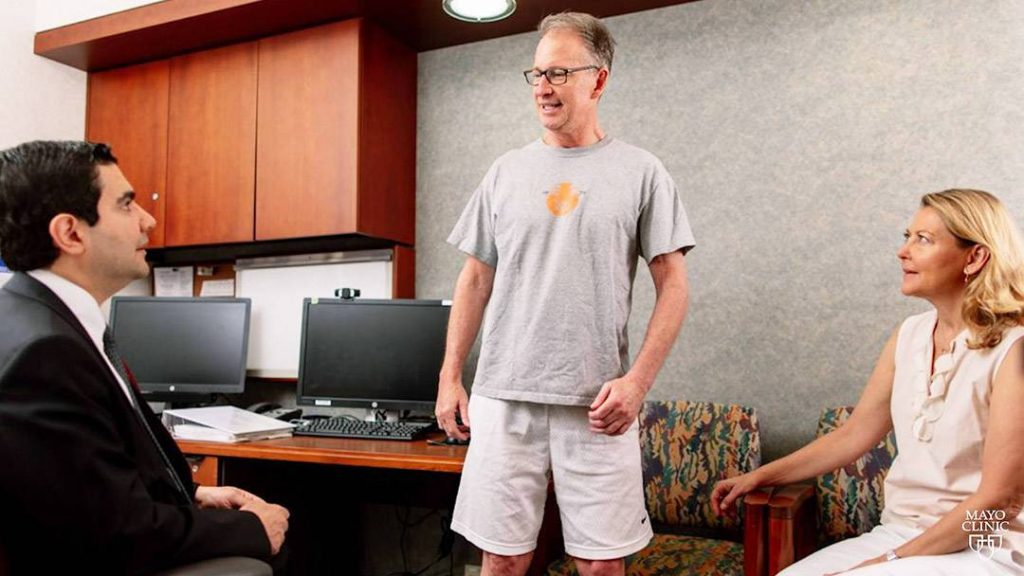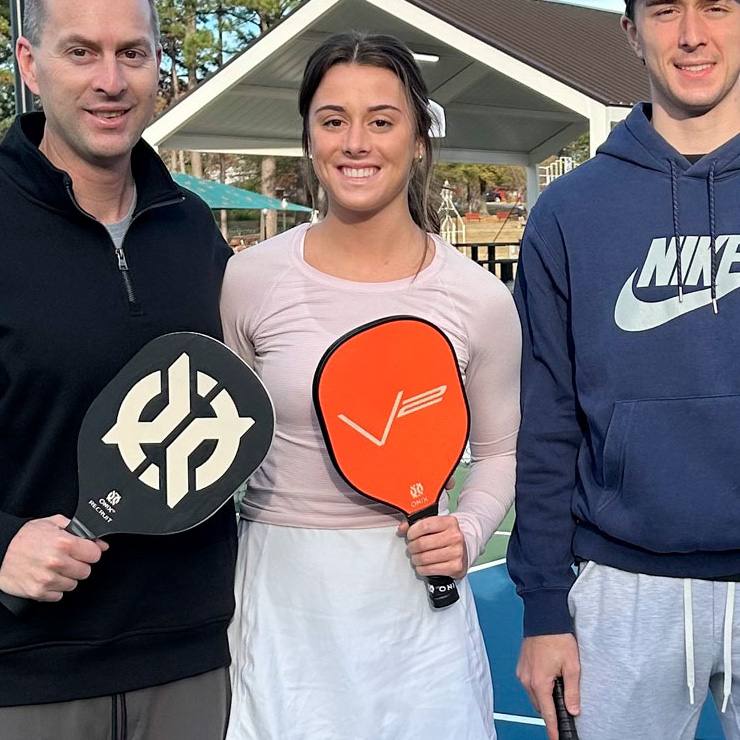
Paralyzed from the neck down as a result of a surfing accident, Chris Barr thought life as he knew it was over. After enrolling in a regenerative medicine clinical trial at Mayo Clinic, however, he began to realize all was not lost.
Chris Barr wanted to give up and give in. A surfing accident in California in 2017 had left Chris with a broken neck in eight places. He was so distraught over being paralyzed from the neck down as a result of his injuries, that the first thing he mouthed to his wife, Debbie, through the intubation tube when she arrived at his hospital bedside was a plea to take it all away.
"When I got there, the first words he mouthed to me were, 'Pull the plug,' which was so shocking," Debbie says.
A short time later, Chris' friend Chet White — who'd been on the beach that day and was the one to drag Chris' body onto shore after his accident — walked into the hospital room and offered Chris some hope. "He said: 'There's technology, new developments every day. Why would you throw in the towel? You've got nothing to lose,'" Chris recalls.
In fact, after discussing the details of a new phase I multidisciplinary clinical trial with Mohamad Bydon, M.D., a Mayo Clinic neurosurgeon, shortly after his injury, Chris learned that he had everything to gain. "We heard about the Mayo stem cell trial …" Chris says. "And at that point," Debbie adds, "it was game on."
The research is preliminary but exciting. Mesenchymal stem cells taken from the stomach fat of a patient with a spinal cord injury are given time to multiply in a cultured laboratory setting. Then they are injected into the patient's lower back. The cells migrate to the site of the patient's injury and help augment healing and any initial improvement in motor and sensory function the patient might have experienced after surgery.
"All of the progress stopped at six months. It flatlined. That's when Dr. Bydon had us come out to Mayo."
Chris Barr
"We want to intervene when the physical function has plateaued, so that we do not allow the intervention to take credit for early improvements that occur as part of the natural history with many spinal cord injuries," says Dr. Bydon, who is the lead investigator of the phase 1 regenerative medicine trial at Mayo Clinic in Rochester.
For Chris, that intervention came 11 months after his injury when the limited improvement in his ability to move his arms and legs that had come after surgery and months of intense physical therapy had bottomed out. "All of the progress stopped at six months," Chris says. "It flatlined. That's when Dr. Bydon had us come out to Mayo."
At Mayo Clinic, Chris was enrolled as patient No. 1 in the 10-patient clinical trial that's testing the safety, side effects and ideal dosage of stem cells to help treat severe spinal cord injuries. The treatment remains experimental, and it is not yet approved by the Food and Drug Administration for large-scale use.
While early results show patient response varies greatly, for Chris the response was both immediate and life-changing. "I could feel it," he says of the initial stem cell injection. "I absolutely felt something in my legs."
Once those injected stem cells went to work on his injured spine, it wasn't long before Chris began seeing improvement in his physical and occupational therapy test scores, including his 10-meter walk test, ambulation test, grip and pinch strength test, and manual dexterity tests. "Every single one of them improved by 25% to 50% for my upper extremities and 100% for my lower extremities," Chris says. "Clearly, something happened."
As Chris' participation in the trial continued, so did his improvement. "The first time I started walking by myself, that was really something," he says. His response to the treatment wasn't remarkable for Chris alone, but for the team of researchers and care providers at Mayo Clinic who helped make it happen, as well. "To be able to see him stand up and walk toward me was really just an extraordinary feeling," Dr. Bydon says. "I wanted all of the investigators in this space to see that."
"This trial will help us advance the field, so we can offer new treatments for patients with spinal cord injury."
Mohamad Bydon, M.D.
The team of investigators included Mayo Clinic's Wenchun Qu, M.D., Ph.D.; Allan Dietz, Ph.D.; Sandy Goncalves; F.M. Moinuddin, Ph.D.; Mohammed Ali Alvi, M.B.B.S.; Anshit Goyal, M.B.B.S.; Yagiz Yolcu, M.D.; Christine Hunt, D.O.; Kristin Garlanger, D.O.; Ronald Reeves, M.D.; Andre Terzic, M.D., Ph.D.; and Anthony Windebank, M.D.
While Chris' response to the trial's stem cell treatment has been remarkable, Dr. Bydon cautions that not all spinal cord injury patients will have the same outcome. "Although some patients like Chris are super-responders, other patients are moderate responders or nonresponders," Dr. Bydon says. "But this trial will help us advance the field, so we can offer new treatments for patients with spinal cord injury."
That's exactly what it's done for Chris. "I can't say it enough times that the stem-cell regimen and protocol offers hope," he says. "The hopelessness of paralysis is just unlike anything you can imagine. And this is the hope."
Watch this video to hear Chris and Dr. Bydon talk more about how that hope came to life for him:
HELPFUL LINKS
- Learn more about the diagnosis and treatment of spinal cord injuries.
- Read about Mayo Clinic's Center for Regenerative Medicine.
- Meet others dealing with back and spinal issues and get support in the Spine Health group on Mayo Clinic Connect.
- Explore Mayo Clinic.
- Request an appointment.







